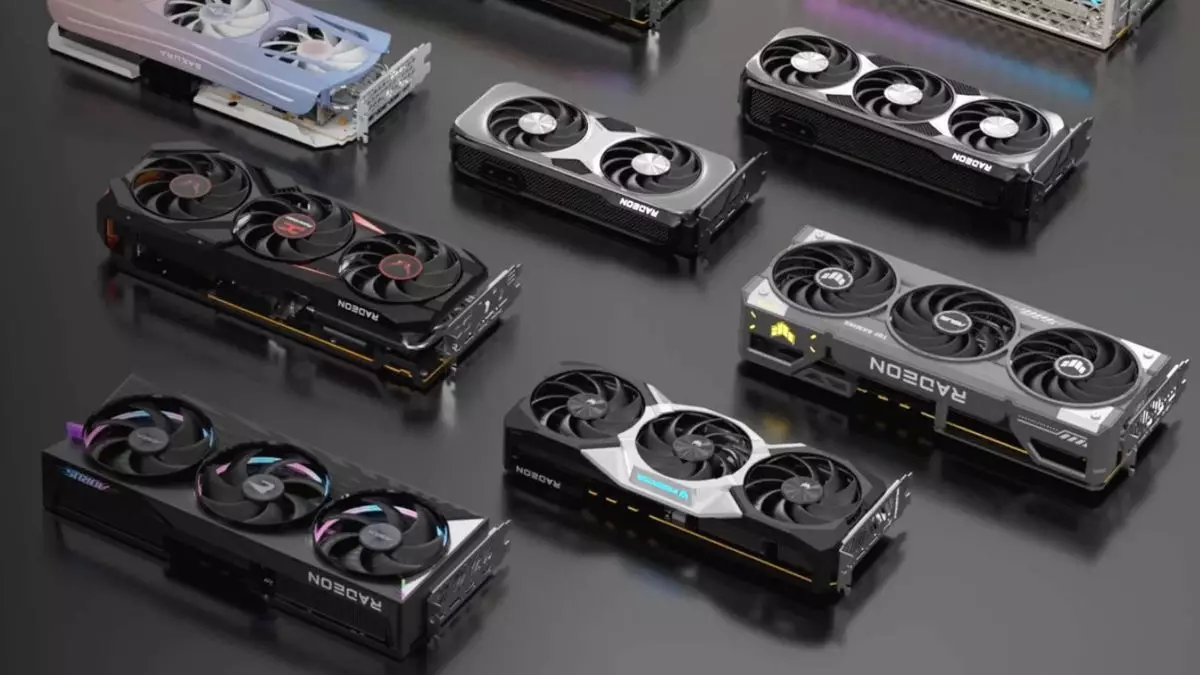The landscape of computer graphics technology is ever-evolving, and the impending launch of AMD’s Radeon RX 9070 XT has stirred anticipation and concern within the gaming and hardware communities. As we gear up for Q1 2025, the excitement is palpable—yet, so too are the shadows cast by delays and shortages. This article delves into the rumors and revelations surrounding the RX 9070 XT, examining its technical specifications, potential performance, and the implications for the GPU market.
Rumors and leaks have always been a staple of the tech industry, and the buzz surrounding AMD’s new graphics card is no exception. Recently, a prominent user, HKEPC, shared a screenshot from the GPU-Z application, unveiling key specifications of the RX 9070 XT, codenamed ‘Navi 48.’ According to these leaks, the RX 9070 XT boasts an impressive 4,096 shader cores coupled with 16 GB of GDDR6 memory and a 256-bit memory bus. Such figures were anticipated based on earlier leaks, but confirmation brings a sense of legitimacy to the excitement. This solidifies AMD’s intent to provide a powerful contender capable of delivering high-end gaming experiences, especially in popular titles that demand robust graphical performance.
In comparison, AMD’s existing RX 7800 XT and RX 7900 XT showcase core counts of 3,840 and 5,376 respectively, positioning the 9070 XT squarely as a middle ground aimed at users who seek balance between affordability and performance. The RX 9070 XT’s enhanced specs bolster expectations that it will cater to gamers looking for high frame rates at 1080p and beyond.
The excitement escalated further with HKEPC also reporting a staggering achievement from a benchmark test: 211.7 frames per second (fps) recorded during gameplay in *Monster Hunter Wilds.* While this benchmark test was conducted at 1080p with frame generation enabled—an important consideration—the results nevertheless reflect a promising performance trajectory. The game itself is known for its demanding graphics, often pushing GPUs to their limits. Given that context, the RX 9070 XT’s performance potentially hints at its ability to handle even the most taxing gaming scenarios with ease.
Nevertheless, as any seasoned gamer will acknowledge, a single benchmark can only tell part of the story. Analyzing a wider array of gaming workloads, including 4K gaming and real-time ray tracing capabilities, will ultimately elucidate the true strengths and weaknesses of the RX 9070 XT. AMD will need to ensure that it offers a versatile product capable of excelling across diverse gaming scenarios lest they want to sway gamers who may still eye offerings from competitors, particularly Nvidia.
The clock is ticking as we await the RX 9070 XT’s official launch, projected for early March 2025. AMD CEO Dr. Lisa Su’s recent confirmation of this timeline has been a welcome announcement, especially against the backdrop of Nvidia’s RTX 5070 Ti release slated for February 20, 2025. The timely launch of the RX 9070 XT might give AMD the upper hand in securing market share, particularly if it can achieve robust stock levels amidst ongoing supply chain issues that have plagued the industry.
The tumultuous nature of the GPU market cannot be ignored; recent Nvidia launches have frequently disappointed with stock availability. This provides AMD with a potential advantage, especially if they can meet consumer demand with a product offering impressive performance at a competitive price point. Being actively available is a significant factor that could sway buyers in AMD’s direction, enabling them to capitalize on a market where users are eager, yet often frustrated by the scarcity of GPUs.
In summation, the AMD Radeon RX 9070 XT is poised to become a formidable player in the GPU market as it strives to capture the attention of discerning gamers and tech enthusiasts alike. With promising specifications and potential performance benchmarks already creating a buzz, the actual impact will unfold as we draw nearer to its release date. As competition heats up with rival releases from Nvidia, the quest for consumer loyalty will hinge on more than just performance; it will depend on availability and pricing structures that resonate with the audience. Overall, AMD seems well-equipped to take on the challenges ahead, but the execution will ultimately determine its standing in an increasingly competitive arena.

